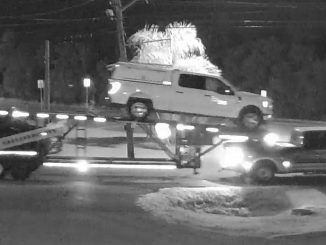
For the 18th consecutive year, the Louisiana Department of Natural Resources/Coastal Engineering Division will collect Christmas trees to help stop erosion of the state’s wetlands.
The department does this by using those trees to build a brush fence, which slows fetch and traps sediments. Brush fence enclosures are constructed out of wood and are filled with clean, discarded Christmas trees.
Unlike other trees, Christmas trees are large and lightweight and allow the movement of water and sediment without being a barrier. The limbs are also organic and provide an ideal fisheries habitat.
Residents in St. Charles Parish may drop off their trees at either the West Bank or East Bank Bridge Parks until Jan. 11.
There will also be curbside pickup of the trees on Jan. 10.
“This is a classic win-win project,” DNR Secretary Scott Angelle said. “Not only do we keep Christmas trees out of landfills, we put them to work protecting our valuable coastline.”
Angelle says that the program also helps families learn to participate in both recycling and in saving the wetlands.
The prototype of the current brush fence was actually implemented for the first time in St. Charles Parish in 1989. At that time, 23 brush fences were built and filled with 8,000 used Christmas trees obtained from local citizens. The fences were inserted into the La Branche Wetlands.
The project really took off after that, and in 1996, former President Bill Clinton donated 50 Christmas trees from the White House, which were all placed into the Louisiana marsh. Throughout the first 15 years of the program, 40,000 linear feet of brush fences have been built, protecting 250 acres of marsh.
Over 1.5 million trees have been used.
“Trees must be free of all tinsel, flocking, ornaments or bases and cannot be in plastic bags,” Keith Lovell, DNR coastal engineering project manager, said. “In this season of giving, this project keeps giving for years and years.”
Not only is the project beneficial because it protects the wetlands, but it also relieves overburdened landfills.




Be the first to comment